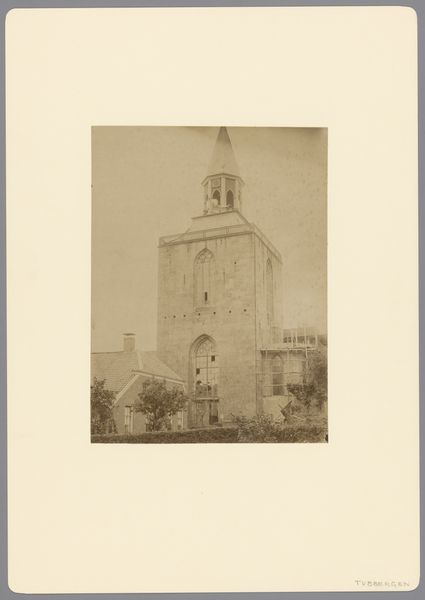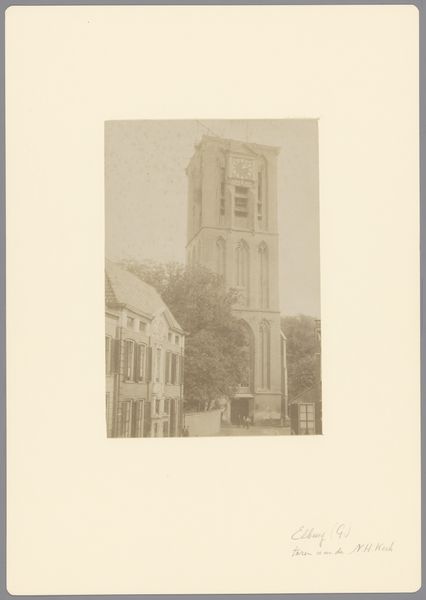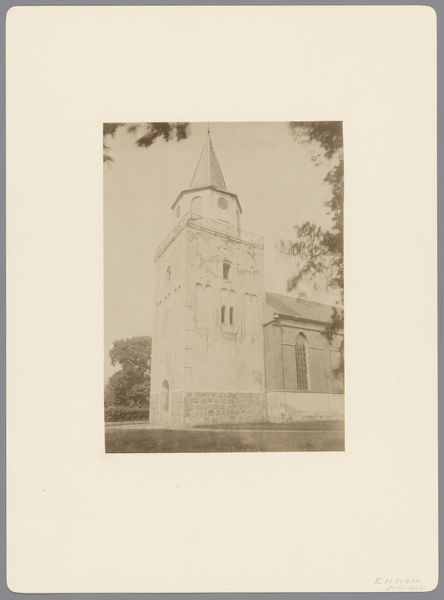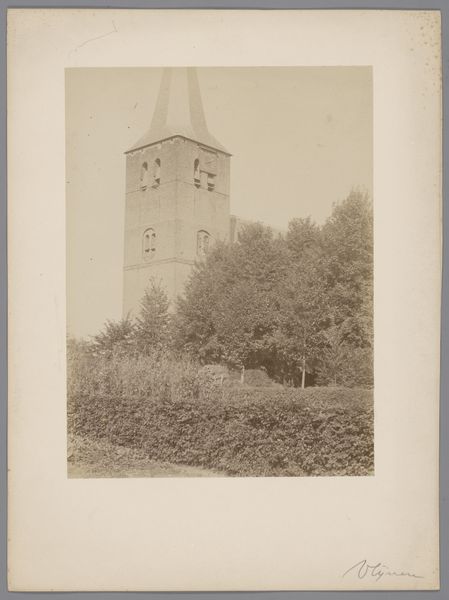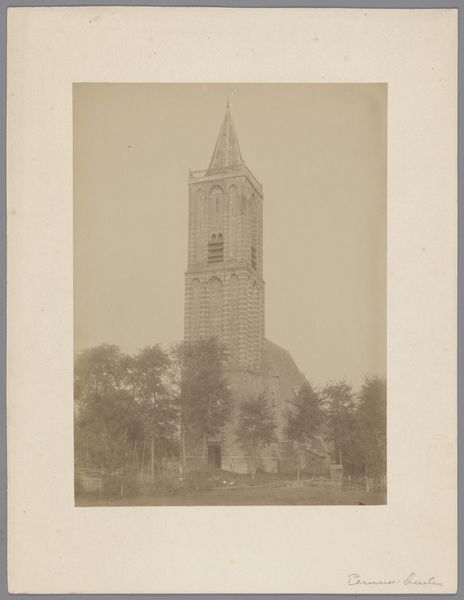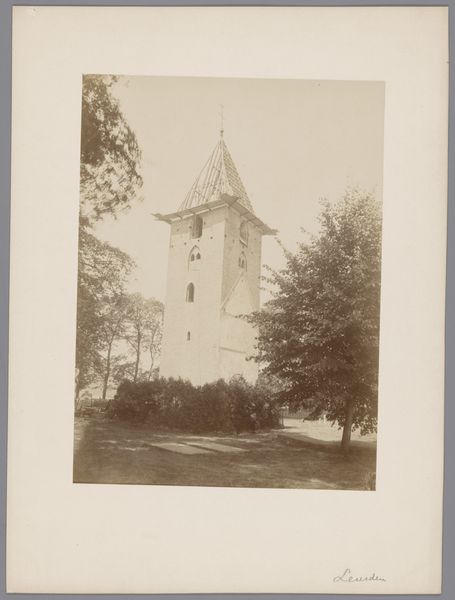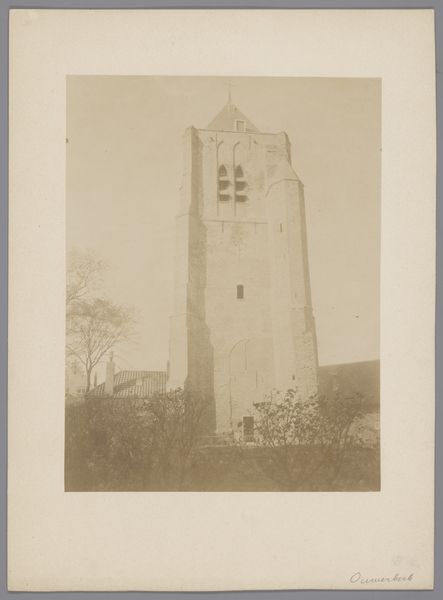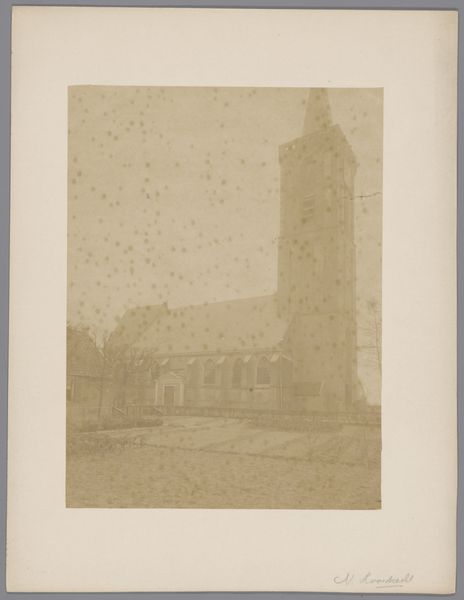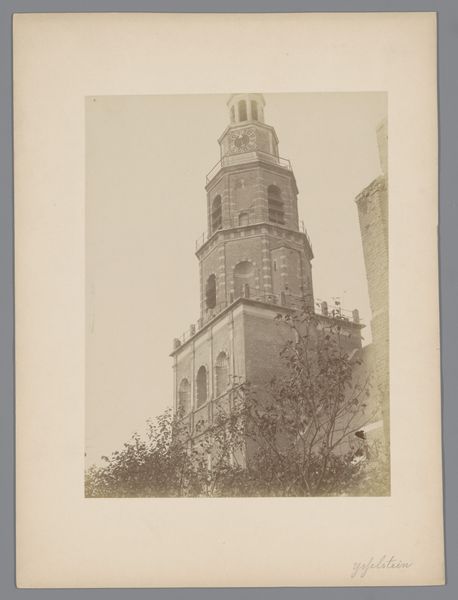
Dimensions: height 203 mm, width 173 mm
Copyright: Rijks Museum: Open Domain
Curator: Looking at this serene photograph, titled "Gezicht op de Sint-Nicolaaskerk te Dwingeloo," dating from 1890 to 1910, I'm struck by its quiet beauty. Editor: It's muted. I find the monochrome washes draining. You have a very straightforward composition depicting what I presume to be a historical church and nothing particularly striking. The means of production do intrigue me however—do we know more about that? Curator: Indeed, that sepia tone lends a certain historical gravity. It was captured by an anonymous photographer associated with Monumentenzorg. This aligns with Monumentenzorg's role in surveying historical architecture for preservation purposes, hinting at how deeply entwined photography was with shaping ideas about cultural heritage. The image would have likely served some kind of survey and archiving function. Editor: Absolutely. This kind of production, this systematic cataloging, is so crucial to thinking about our material culture. What choices dictated the picture being taken, the precise positioning of the photographer and the equipment that captured the scene and fixed the chemical composition onto that piece of light sensitive paper? Curator: Precisely! This image, like many others commissioned by Monumentenzorg, reinforces a particular narrative of Dutch heritage, emphasizing a conservative reading of architectural history rooted in patriarchal structures, visible even in the stark grandeur of religious institutions like this. Think about how social expectations, and gender roles influenced what stories got prioritized! It isn’t neutral. Editor: I agree; that focus inevitably sidelines stories associated with craft and ordinary material realities, yet this image still holds so much data about the availability of particular tools at that moment in time—as well as available time, the labour that went into processing the plate...and so on! It offers insights. Curator: By turning our analytical lenses onto these objects, we uncover latent voices and neglected perspectives! The camera becomes a mediator. Editor: Perhaps a more nuanced study of such images could provide clues concerning building processes: which workers made which aesthetic choices concerning those construction materials— Curator: Let's hold onto this point as we uncover these voices, layer by layer, peeling away the monochrome veil. Editor: Absolutely. Looking at the image like this gives us insight into past materiality, process, and its enduring consequences.
Comments
No comments
Be the first to comment and join the conversation on the ultimate creative platform.

